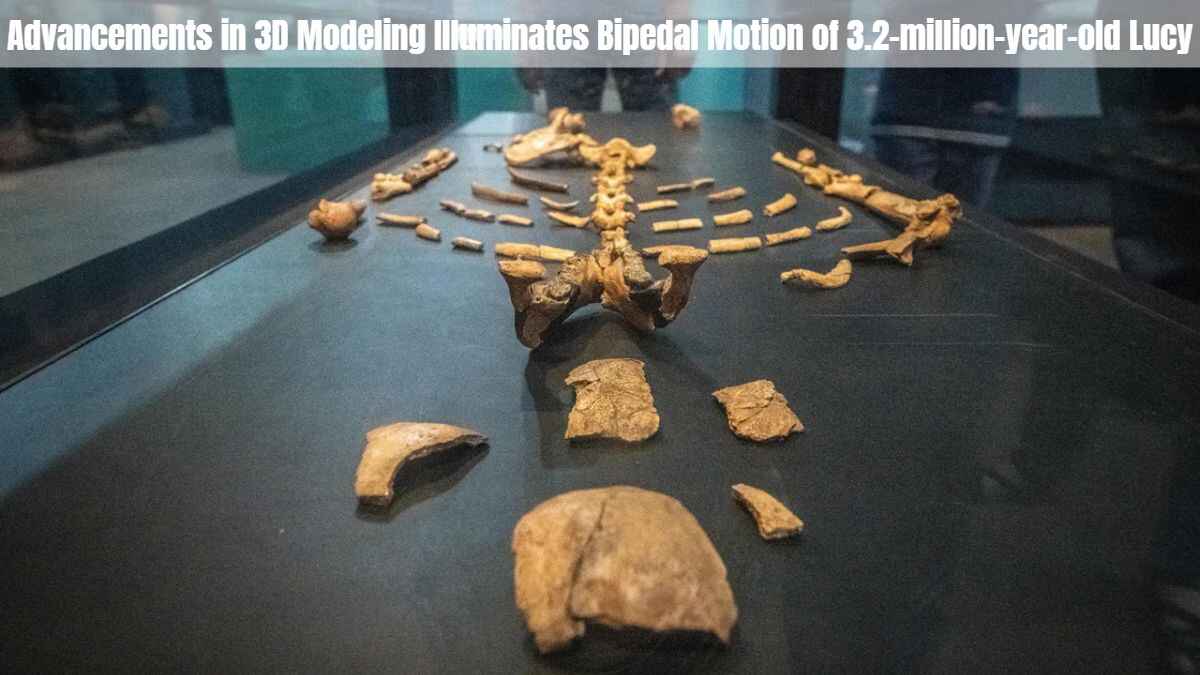
Understanding how extinct species moved is a significant challenge for paleontologists. Although skeletons provide valuable information, they rarely preserve the soft tissues important for reproducing movement. However, recent advances in three-dimensional polygonal modeling, guided by imaging and muscle scar scanning data, have opened new avenues for reconstructing missing soft tissues.
This article explores the application of this technique to the Australopithecus afarensis specimen AL 288-1, also known as ‘Lucy’, one of the most complete hominin skeletons, shedding light on the debate surrounding movement by its two legs.
Testing conducted on Lucy’s fossils over the past two decades has shown that she and individuals of her species were capable of bipedal locomotion. However, Dr Ashleigh LA Wiseman, lead author of the study and a research associate affiliated with the University of Cambridge in the UK, sought to take a more comprehensive approach by recreating unfossilized aspect of Lucy: her musculature.
“The defining aspect of what makes us human is the ability to walk on two legs, but understanding how and why this evolved has been debated for a long time.”
Dr. Wiseman also added, “With recent advances in computational modeling, we can now investigate these questions. Of course, in the fossil record we are only looking at bare bones. But muscles animate the body – they allow you to walk, run, jump and even dance. So if we want to understand how our ancestors moved, we first need to reconstruct their soft tissues.”
Capacity for an upright posture
In the study, a meticulous reconstruction of the muscle configuration of Lucy’s pelvis and lower limbs was published, providing invaluable insights into the locomotion capabilities of Australopithecus afarensis. The comprehensive analysis includes 36 muscles, meticulously mapped to their spatial distribution within each body segment.
The findings of this investigation, based on mechanical lever testing, indicate that Au. Afarensis possessed the ability to maintain an upright posture, thus suggesting bipedal locomotion. However, the study also suggests that these early hominins were capable of a variety of movements beyond bipedalism on land, reminiscent of behaviors observed in chimpanzees and bonobos.

“I was surprised to see that the knee extensors (the muscles that create and maintain a straight knee when you stand up) were comparable to those in humans,” Wiseman said. “This means Lucy can stand and walk as effectively as possible.”
It is important to note that although the current results do not clearly confirm the effectiveness of bipedalism in Lucy, they do demonstrate that upright walking is indeed a viable option. In the future, the use of polygonal muscle modeling approaches shows great promise in reconstructing hominin soft tissues and provides important information about muscle configuration and full shape.
For future studies delving into muscle function in hominids, several key factors must be considered. First, researchers should pay due attention to the space occupied in a desired body part, including detailed analysis of muscle pathways and volume. Second, the importance of digitizing the entire surface of the attachment site cannot be overstated, as this step allows for a more precise determination of the actual center. Finally, it is necessary to consider the collective impact of all the muscles acting on a given body part, rather than just focusing on an individual muscle.

To facilitate further study and potentially support the teaching of human evolutionary anatomy, an interactive three-dimensional Autodesk Maya scene showing the entire musculature is provided with the lesson. write this. This invaluable resource will serve as a valuable tool for future research efforts and may even contribute to improved understanding of human evolution.
The insights gained from this study shed new light on the mobility of Au. afarensis and emphasizes the importance of examining muscle structure in our understanding of human evolution. With the advancement of muscle regeneration techniques, we are poised to gain more knowledge about the soft tissue profiles of our ancient ancestors, unraveling the mysteries surrounding their evolutionary past. ta.
| 100 million year old Sauropod dinosaur bones found in Meghalaya
Categories: Optical Illusion
Source: pagasa.edu.vn